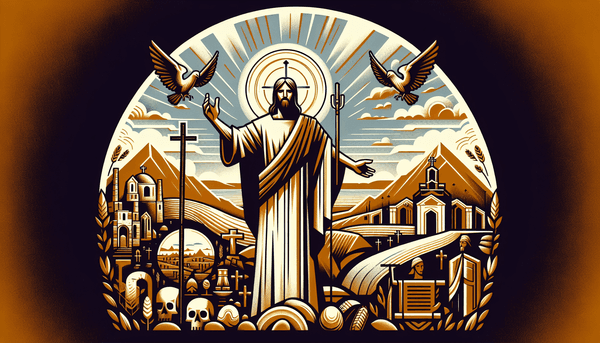The Fall of Lucifer from Heaven
The fall of Lucifer, often equated with Satan, is a subject of great interest and debate among theologians. While the Bible does not chronicle this event in a chronological narrative, passages from both the Old and New Testaments provide glimpses into what many believe to be his downfall. Isaiah speaks of a figure who has fallen from heaven, named Lucifer, son of the morning, cut down to the ground for weakening the nations (Isaiah 14:12-15). Ezekiel references a once-anointed cherub who was on the holy mountain of God but was cast down due to iniquity (Ezekiel 28:14-17). These passages, while directed at earthly rulers, carry deeper allegorical meanings that have been interpreted as describing Satan's pride and rebellion. The New Testament adds another dimension with the Book of Revelation depicting a war in heaven, where Michael and his angels battle against the dragon, resulting in Satan's expulsion to earth (Revelation 12:7-9).
The Key to Eternal Life
In the quest for eternal life, the Bible offers a clear and singular answer: Jesus Christ. He proclaims Himself as 'the way, the truth, and the life' (John 14:6), asserting that no one comes to the Father except through Him. The Gospel of John emphasizes the necessity of belief in Jesus for eternal life, famously stating, 'For God so loved the world, that he gave his only begotten Son, that whosoever believeth in him should not perish, but have everlasting life' (John 3:16). This eternal life is not only about belief but also about living in accordance with Jesus' commandments of love and service, as highlighted in the community and fellowship of believers referenced in Luke 18:20 and Mark 12:30-31. The Apostle John reiterates that this promise of life is found in the Son, and whoever has the Son has life (1 John 5:11-12).
Mary's Age at the Annunciation
The Annunciation, when the angel Gabriel announced to Mary that she would conceive Jesus, is a moment of profound faith and acceptance. While the Bible does not explicitly state Mary's age, cultural and historical context suggest she was likely a young teenager, as this was the common age for betrothal during her time. The Gospel of Luke provides the most detailed account of the Annunciation and Mary's response (Luke 1:26-38), highlighting her remarkable faith and willingness to serve God's purpose. The virgin conception of Jesus, as foretold by the prophet Isaiah (Isaiah 7:14) and reiterated in Matthew 1:18-23, is central to Christian doctrine. Mary's song of praise, known as the Magnificat (Luke 1:46-55), and her subsequent actions (Luke 2:41-52) further illustrate her faith and the significance of her role as the mother of Jesus.
Conclusion
The narratives and teachings we have explored serve as cornerstones to understanding the Christian faith. Saul's conversion underscores the transformative power of divine grace, while the fall of Lucifer warns of the consequences of pride and rebellion. The key to eternal life, as presented through Christ's teachings, invites us into a relationship of belief and obedience. In a similar vein, nurturing unwavering faith is indispensable in the Christian journey, embodying the essence that sustains believers. Lastly, Mary's faithful acceptance at the Annunciation inspires believers to embrace God's will with humility and trust. These stories, rich with theological significance, encourage us to dig deeper into the scriptures and apply their truths to our own lives.
FAQ
Q: Did Saul meet Jesus while He was alive on earth?
A: Saul, who later became known as Paul, did not meet Jesus during His earthly ministry. His encounter with the risen Jesus occurred after Jesus' crucifixion, resurrection, and ascension.
Q: What is the key to eternal life?
A: According to the Bible, the key to eternal life is belief in Jesus Christ as the Son of God and Savior, and living in accordance with His commandments of love and service.
Q: Are there biblical passages that refer to the fall of Lucifer?
A: Yes, passages such as Isaiah 14:12 and Ezekiel 28:14-15 are often interpreted as allegories for the fall of Lucifer, and the Book of Revelation speaks of Satan being cast out of heaven in Revelation 12:7-9.
Q: What was Saul's response to his encounter with Jesus on the road to Damascus?
A: Saul, struck by a blinding light and hearing Jesus' voice, asked, \"Lord, what wilt thou have me to do?\" He was instructed to go into the city of Damascus, where he would be told what he must do (Acts 9:3-6).






